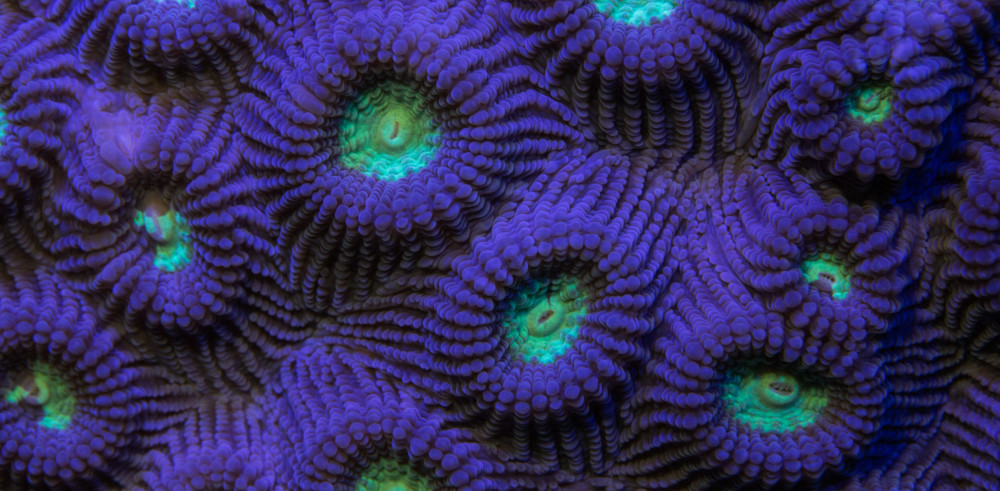Gall crabs are coral-dwelling crabs that spend their entire life living inside a hole of the hard coral. These micro crabs are only 7mm-10mm in size. They are hard to find and photograph due to their small size.
These tiny crabs are considered to be safe keepers or guardians of the hard coral. The gall crabs defend against coral eating predators such as starfish and snails. The coral provides shelter and food, making it an ideal habitat for the micro coral-dwelling gall crab. I have found these crabs in a variety of coral species in Okinawa. They are usually found in shallow water corals, but recently I found a healthy colony of crabs at sixty-five feet.
If you’re lucky you might see a gall crab searching for food during the night.
The only reason I found this beauty was because she was leaving the gall to release her eggs.
 Some of the gall crabs fluoresce using the specialized Light & Motion Nightsea underwater blue light.
Some of the gall crabs fluoresce using the specialized Light & Motion Nightsea underwater blue light.
After the crabs die, the galls become a new shelter opportunity for snails, fish, and reef crabs.
I found this hard coral washed up on Iheya Island. Look close and you can see that hole made by the gall crab.
My Mission: To Document and Preserve the Wildlife of the Ryukyu Islands
This site is also designed to help people identify the beautiful animals of Okinawa, basically to serve as an online nature reference guide. If you would like to make a contribution to support my mission, please click on the donation link paypal.me/maketheswitch4nature
Your donations will help conservation initiatives as well as bring solutions to the worldwide pollution issues on our beautiful shorelines. Thank you for your support, Shawn M Miller.
#MakeTheSwitch4Nature













































